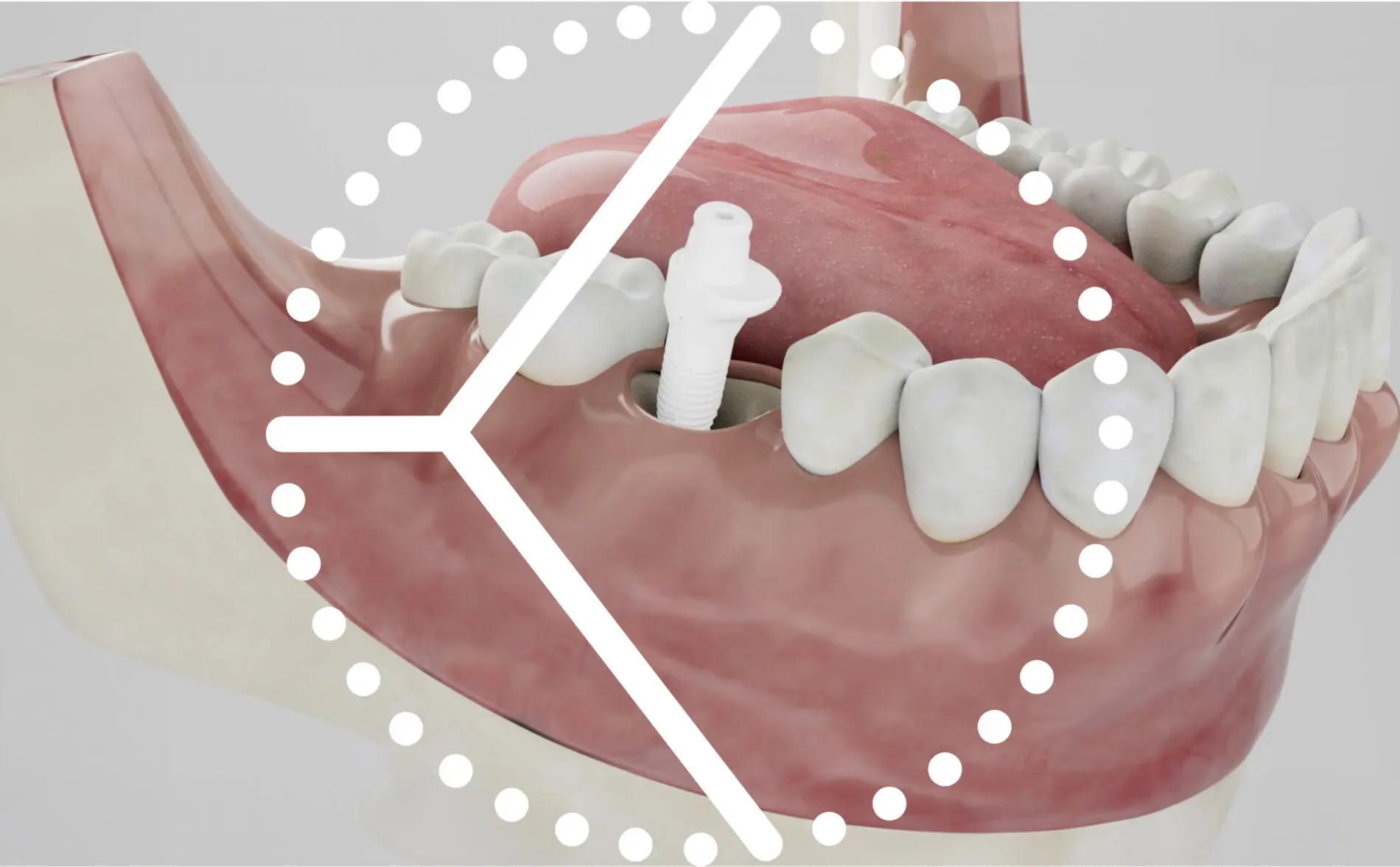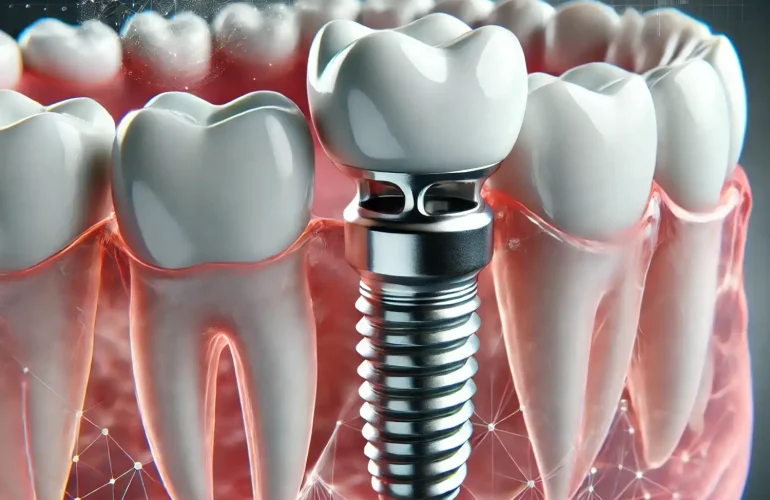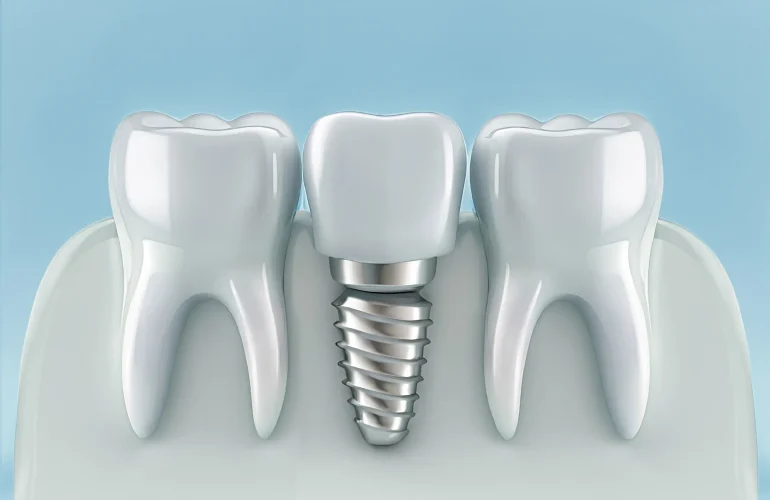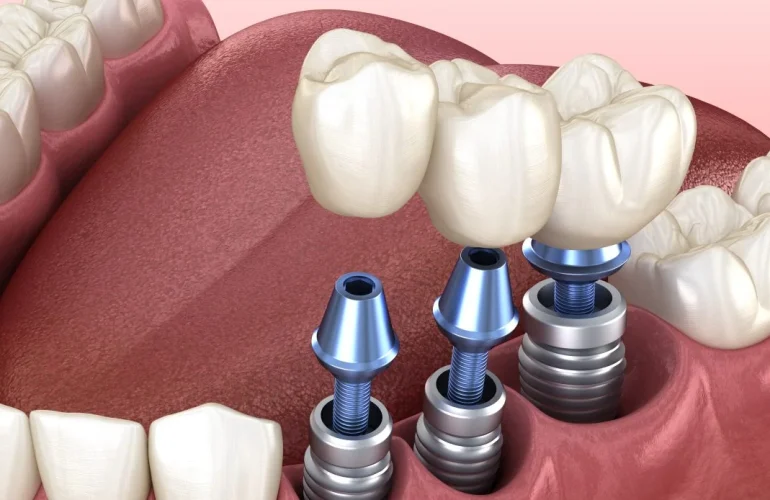Ceramic implants have emerged as one of the most advanced and aesthetically appealing solutions in modern dentistry. Offering metal-free, biocompatible, and highly durable alternatives to traditional titanium implants, ceramic implants provide patients with natural-looking, long-lasting tooth restorations. This comprehensive guide explores what ceramic implants are, their benefits, the procedural steps, patient suitability, and post-operative considerations to ensure optimal oral health and long-term success.
Understanding Ceramic Implants
Ceramic implants, also commonly referred to as zirconia implants, are made from high-strength, medical-grade ceramic materials, specifically zirconium oxide. Unlike metallic implants, ceramic implants are white in color, allowing them to blend seamlessly with natural teeth, making them ideal for aesthetic zones. Key properties include:
Biocompatibility: Minimizes risk of allergic reactions or tissue inflammation.
Aesthetic Advantage: White color prevents grey discoloration of gums, especially important for front teeth.
High Strength and Durability: Resistant to fracture and wear over time.
Corrosion Resistance: Unlike metals, ceramic implants do not corrode or release ions into surrounding tissue.
Smooth Surface: Reduces bacterial adhesion, supporting optimal oral hygiene and gum health.
Benefits of Ceramic Implants
Ceramic implants offer numerous clinical and aesthetic advantages over traditional implant materials:
Metal-Free Solution: Ideal for patients with metal sensitivities or concerns about long-term exposure to metals.
Enhanced Aesthetics: Perfect for anterior teeth, ensuring a natural, seamless smile.
Promotes Gum Health: Biocompatible surfaces allow better soft tissue integration.
Durable and Strong: Capable of withstanding normal chewing forces without compromising longevity.
Reduced Risk of Plaque Accumulation: Smooth, non-porous surfaces minimize bacterial colonization, reducing peri-implantitis risk.
Who is Suitable for Ceramic Implants?
Ceramic implants are suitable for a wide range of patients, though careful evaluation is necessary to ensure long-term success:
Patients with Metal Allergies: Provides a completely metal-free alternative.
Individuals Seeking High Aesthetic Outcomes: Particularly suitable for visible teeth where appearance is a priority.
Patients with Healthy Jawbone Structure: Adequate bone density is essential for stability and osseointegration.
Non-Smokers or Patients Committed to Lifestyle Adjustments: Smoking can affect healing and implant success, making lifestyle considerations critical.
Patients Without Uncontrolled Chronic Conditions: Diabetes or other conditions must be well-managed prior to implant surgery.
The Ceramic Implant Procedure: Step by Step
1. Pre-Operative Assessment and Planning
Successful ceramic implant placement begins with a comprehensive assessment:
Oral Examination: Evaluates gum health, teeth alignment, bite occlusion, and soft tissue condition.
Radiographic Imaging: CBCT scans and panoramic X-rays provide a 3D view of jawbone density, anatomical landmarks, and sinus position.
Medical History Review: Ensures patient suitability and identifies any systemic factors affecting healing.
Treatment Planning: Determines implant size, position, and prosthetic design customized to the patient’s oral anatomy.
2. Surgical Placement of Ceramic Implants
The surgical procedure involves several precise steps:
Anesthesia Administration: Local anesthesia or sedation ensures patient comfort.
Incision of Gum Tissue: Accesses the jawbone for implant insertion.
Osteotomy Preparation: Drilling a precise hole in the jawbone for implant placement.
Implant Insertion: The ceramic implant is placed with exact alignment and primary stability, crucial for successful osseointegration.
Temporary Closure: The gum tissue is sutured over or around the implant for initial healing.
3. Healing and Osseointegration
Following placement, the implant undergoes osseointegration, where the bone fuses with the ceramic implant surface. This phase typically lasts 3 to 6 months, providing a strong and stable foundation for the final prosthetic restoration. Proper oral hygiene and post-operative care are essential to avoid complications during this period.
4. Abutment and Crown Placement
After successful osseointegration:
Abutment Attachment: Connects the implant to the prosthetic crown, allowing proper emergence profile and gum shaping.
Custom Crown Fabrication: High-quality ceramic crowns are crafted to match adjacent teeth in color, shape, and translucency.
Final Placement: The crown is secured, restoring full function and natural appearance.
Post-Operative Care and Maintenance
Maintaining ceramic implants requires adherence to post-surgical care instructions:
Oral Hygiene: Gentle brushing, flossing, and antiseptic rinses to prevent bacterial accumulation.
Dietary Considerations: Soft foods during the initial healing phase reduce stress on the implant.
Regular Check-Ups: Monitor implant integration, gum health, and overall oral hygiene.
Lifestyle Adjustments: Avoid smoking and excessive alcohol during healing to promote optimal bone and soft tissue integration.
Advantages Over Traditional Implants
Compared to traditional titanium implants, ceramic implants offer:
Superior Aesthetic Integration: White color eliminates visible metal components.
Reduced Risk of Allergic Reactions: Metal-free composition is safe for sensitive patients.
Soft Tissue Compatibility: Promotes healthier gum attachment and reduces the risk of recession.
Lower Plaque Formation: Smooth ceramic surface supports long-term oral hygiene.
Potential Considerations
While ceramic implants provide numerous benefits, certain factors must be considered:
Brittleness: Though strong, ceramic implants are more susceptible to fracture under extreme forces compared to titanium.
Proper Placement Required: Requires precise surgical technique to avoid stress points.
Bone Density Requirements: Adequate jawbone is essential; bone grafting may be needed in deficient areas.
Ceramic implants represent a revolutionary solution for modern dental restoration, combining aesthetic excellence, biocompatibility, and functional durability. From meticulous pre-operative assessment to precise surgical placement, healing, and final crown restoration, ceramic implants provide patients with natural-looking, long-lasting, and reliable tooth replacements. Suitable for those seeking metal-free solutions and superior aesthetic outcomes, ceramic implants ensure optimal oral health, enhanced gum integration, and a confident smile that endures for years.






